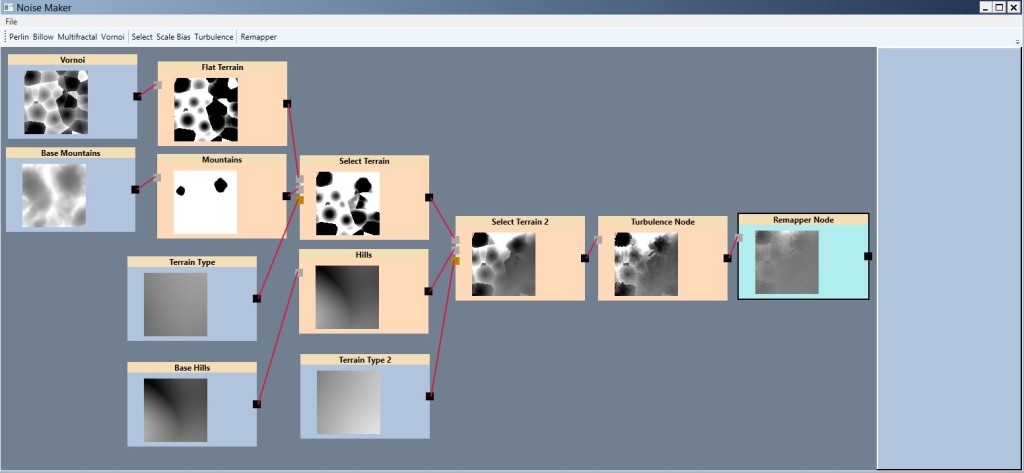Making Noise
So I recently made use of the brilliant LibNoise library to create some complex noise to use as a heightmap. LibNoise makes it easy to create various noise modules (Perlin, Vornoi, Multifractal, etc…) and transform/combine them in various ways. It’s great except for one thing: visualizing exactly what is happening when you tweak parameters can be hard. For the project I was working on I just blindly tuned things until the final product looked about right. This worked ok, but it often felt like fumbling in the dark and a lot of time was wasted changing some numbers and running the program again.
With some spare time on my hands I decided there might be a better way. So I sat down and built a graphical node editor that uses LibNoise. With the magic of WPF (when it works it is amazing, though when it doesn’t it’s like pulling teeth) I created NoiseMaker, a screenshot of which can be seen below:
You can drop in various modules, link them together and tweak their parameters. A small image shows a preview of the result at every stage so you can see exactly what is going on (there are many tools that work similar to this such as Substance Designer or the Hypershade editor in Maya). Nodes are coloured according to type (generator, transform, utility) and can be moved around freely. The work area can be zoomed in and out, and scrolled around in.
It mostly works although a number of the LibNoise modules still need to be implemented. There is also currently no way to save/load a node network once it is created. Also, right now connections between nodes can be broken, but nodes themselves cannot be deleted. With a little more work it could be quite a useful little application though.
The general idea of a graph editor like this can be useful for a wide range of projects. Now that I have the basics working I could easily adapt it to any number of other projects, and that’s perhaps the most important reason for doing it in the first place.
